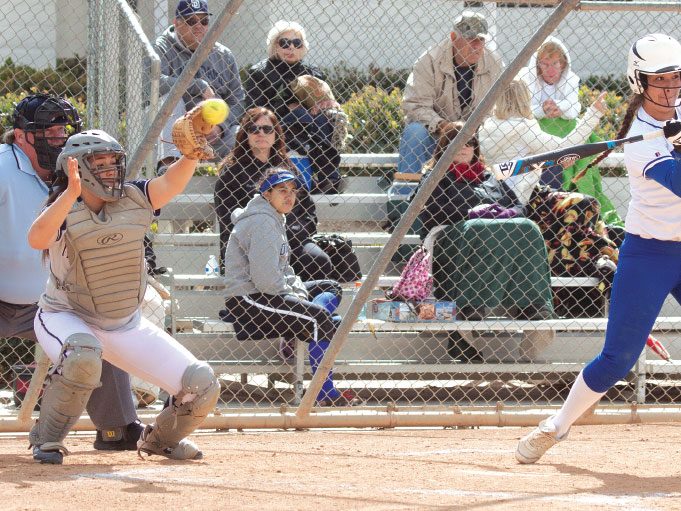While watching MLB’s World Series last fall, I heard the plate umpire, who was wearing a microphone, call, “Ball, outside” after a pitch was delivered wide of the strike zone. Throughout the game he gave the location of pitches he judged not to be strikes. I think that would be a good verbal addition to the standard “ball” call in softball.
For years I’ve added “up,” “down,” “in” and “out” to my borderline “ball” calls in softball, knowing full well it’s not a sanctioned mechanic. The CCA umpire’s manual wants a very loud and distinct verbal for a “strike” and a “ball” called in the same tone, with the same timing and same emphasis every time. According to the NFHS manual, volume, not verbiage, should be used to indicate the closeness of the pitch.
I don’t verbalize every ball call because some pitches are so obviously not a strike that everyone in the park can see. I decided those need not be called. Examples are a pitch over the batter’s head, a pitch that slips and rolls or bounces to the plate, or one that gets away and goes behind the batter. I figured to treat those much like the NCAA wants us to treat a foul ball — “do not call or signal obvious foul balls.” Also, “A call or signal is needed only when there is a play. Concerning plays at bases, no signal is needed when a runner obtains any base before the ball arrives.” Those trains of thought are why I figured I could stay silent on obvious balls.
The reason I added the location to my ball calls was that most teams started calling all pitches from the dugout and the coach that was calling (sometimes the head coach and sometimes an assistant who was in charge of the pitcher) wanted to know why certain pitches were not called strikes. They would ask or yell to the catcher, “Where was that pitch?” which in effect was inferring it should have been called a strike. By NCAA standards, that is “questioning the strike zone,” which could lead to a warning or ejection.
I found that by immediately letting the catcher know the location of the missed borderline pitch, she could relay that information to the coach in the dugout with a small hand wave. She didn’t have to ask me, or worse yet turn around and ask, or just shrug her shoulders, which in effect was telling the coach she thought the pitch should have been called a strike.
The immediate little hand wave showing location by the catcher made it seem the catcher was telling the coach, “Yes, it was a ball and here is where it missed.” That technique to me was being proactive, which the NCAA likes, along with helping keep coaches from getting ejected for questioning me about the strike zone.
The little hand wave reminded me of one of the best and most respected longtime umpires in the Midwest. After some close, borderline balls, he would do that little hand-finger wave on outside and inside pitches to let everyone know that the pitch was just off the plate. That did not keep him from being assigned big or postseason games all the years that he umpired before retiring two years ago.
I bring that up to show that maybe a little more explanation was good for umpiring, just like the now-sanctioned optional “off the bag” and “bobbled ball” calls made to explain certain safe calls.
If the verbal extra call after a ball is good enough for one of the best MLB umpires, maybe softball umpires should be encouraged to add it to help communicate location of missed pitches. That would help umpires with game management and keep games flowing smoothly. The NCAA expects umpires to display and execute superior communication skills. The ball description would be a great one to add.
What's Your Call? Leave a Comment:
Note: This article is archival in nature. Rules, interpretations, mechanics, philosophies and other information may or may not be correct for the current year.
This article is the copyright of ©Referee Enterprises, Inc., and may not be republished in whole or in part online, in print or in any capacity without expressed written permission from Referee. The article is made available for educational use by individuals.

















